There’s something undeniably magical about weddings—they’re the ultimate celebration of love, unity, and new beginnings. And when it comes to Himachal Pradesh weddings, the romance is taken to a whole new level.
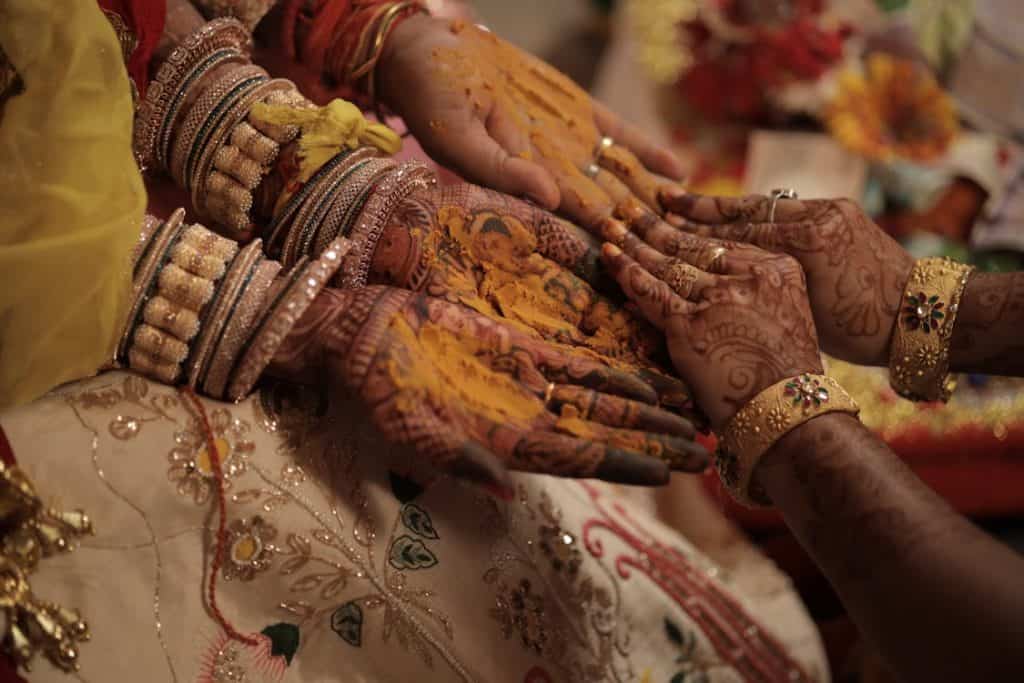
Set against the breathtaking backdrop of majestic mountains and lush valleys, Himachal weddings blend nature’s beauty with the warmth of rich traditions. Watching the the groom’s ceremonial arrival on a decorated horse – the ghurchar, which is often accompanied by vibrant music and dancing and tying the knot surrounded by snow-capped peaks, crisp mountain air, and ancient rituals that have been passed down through generations is special indeed.
The setting itself creates an intimate atmosphere, where the charm of the landscape and the vibrant culture come together to create something unforgettable. During the dham, a traditional Himachali feast served on leaf plates, guests experience not only delicious local flavours but the communal spirit of the region, where food becomes an integral part of the union between families.
Himachal weddings are a perfect fusion of romance and tradition. From the elaborate, colourful attire, like the bride’s intricately embroidered pattu shawl, to the sacred rituals performed under the open sky, these weddings have a sense of timelessness that feels almost otherworldly. One of the most symbolic moments is the devta pooja, where deities are invoked to bless the couple—a reflection of the region’s deep spiritual connection to its natural surroundings.
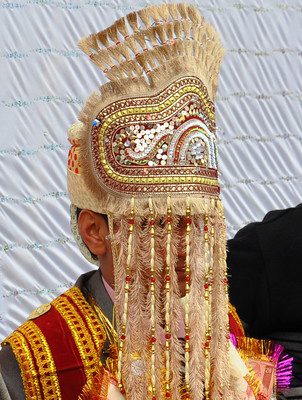
The mountains stand as witnesses to the couple’s promises, and the rustic charm of Himachali culture adds layers of depth and meaning to every ceremony. Even the post-wedding rituals, like the chura ceremony, where the bride’s maternal uncle places red and white bangles on her wrists, carry a significance rooted in ancient customs, symbolizing protection and prosperity.
It’s no wonder why these weddings are so romantic—they’re a celebration of love not just between two people but between nature, history, and community, making every moment feel like a scene from a perfect love story.
In Himachali culture, weddings are not just about the union of two individuals but are also a celebration of community, heritage, and spiritual devotion. From the pre-wedding ceremonies to the main event, each ritual highlights the importance of family, respect for elders, and reverence for local deities.
These weddings also focus on preserving age-old traditions, with many rituals dedicated to seeking blessings from family gods and honouring ancestral customs. The participation of the entire community, the distinctive attire, and the traditional music and dances add to the richness of these events, making them a true celebration of love and cultural identity. Here’s a closer look at the traditional wedding rituals of Himachal Pradesh.
Traditional wedding rituals of Himachal Pradesh
Pre-Wedding Rituals
The pre-wedding rituals in Himachal Pradesh are a significant and joyful aspect of the marriage celebrations, preparing the way for the main event. Rich in tradition, these customs reflect the strong cultural values of family unity, spiritual devotion, and community participation.
Match Making
The first step in a Himachali wedding is matchmaking. A wedding matchmaker, known as ‘Dhamu’ or ‘Roovary,’ is appointed to assess the financial status, social standing, and horoscopes of potential matches for the bride and groom. The ‘Gotra’ and horoscopes are carefully matched, and once these factors align, the marriage is confirmed. Once a suitable match is found, a traditional gift called ‘Tika’ is sent, symbolizing the formal agreement and sealing the marriage arrangement.
Roka or Engagement
The Roka or engagement ceremony in Himachali weddings is a significant prelude to the marriage, marking the formal agreement between both families. This event symbolizes mutual consent to the union and is seen as a promise of marriage.
During the ceremony, families exchange gifts, which often include sweets, clothes, and jewellery, as a token of goodwill and acceptance. Elders from both sides bless the bride and groom, signifying the start of their lifelong bond. This ritual is not only a commitment between the couple but also the beginning of a strong relationship between the two families, laying the foundation for the upcoming wedding.
Devta Puja
Devta Puja or worship of family deities holds immense significance. Many families begin their wedding preparations by seeking blessings from their Kul Devta (family deity) through special prayers and rituals. This ceremony is a way to invoke divine protection and ensure the smooth progress of the wedding events.
The Kul Devta is believed to guide and bless the couple with prosperity, happiness, and a harmonious married life. In rural areas, local deities play a vital role in weddings, as they are considered protectors of the family and the village. Their presence is integral to the ceremony, as offerings and prayers are made to ensure the couple’s well-being and the success of their future together.
Mehendi
The Mehendi ceremony is a joyful and vibrant pre-wedding ritual in Himachali weddings, where intricate henna designs are applied to the bride’s hands and feet. These beautiful patterns are not only a symbol of beauty but also represent joy, love, and the auspiciousness of marriage. Traditionally, the darker the henna stain, the more it is believed to signify the depth of love between the couple.
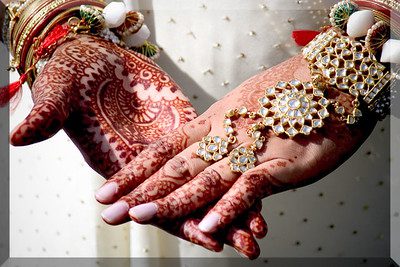
The ceremony is a lively affair, with the bride’s friends and female relatives actively participating. They too have henna applied, sharing in the festive spirit. The event is often accompanied by traditional Himachali songs and dances, which add a cultural touch to the celebration, creating an atmosphere of camaraderie, fun, and blessings for the bride as she prepares for her new chapter in life.
Mama Swagat
The term “mama” refers to the maternal uncle, while “swagat” means welcome. In this tradition, the maternal uncle and his family are warmly received at the groom’s house with music, blessings, and sweets. This ceremony symbolizes the uncle’s support and the participation of the extended family in the wedding. The maternal uncle blesses both the bride and groom, offering them gifts as a gesture of love and goodwill, highlighting the familial bonds and involvement in the wedding celebrations.
Wedding Day Rituals
Tel-Vatna/Haldi
This ceremony takes place in the morning on the day of the wedding, with both the bride and groom participating separately at their respective homes, surrounded by family members. As part of the ritual, a turmeric paste is prepared, often mixed with milk and sandalwood. The paste is generously applied to the bride and groom, as it is believed to enhance their complexion and give them glowing skin. Turmeric and sandalwood are also regarded as sacred, and Himachalis believe that this ritual helps to cleanse negative energies and promote positivity for the couple as they embark on their new journey.
Chooda and Suhagi
On the wedding day, the groom’s family sends chooda and suhagi for the bride. The chooda is a set of red and off-white bangles that the bride wears as part of her wedding attire. Suhagi refers to a round piece of gold jewelry, known as chaak in Himachal, which can be worn as a headdress or necklace. Another significant piece of jewelry that embodies the pride of Himachali brides is the nath (nose ring), an important symbol in the bridal ensemble.
Sehra Bandi
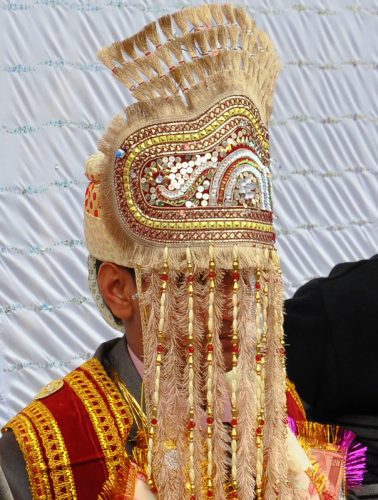
In Indian weddings, it is traditional for men to wear turbans, but the groom dons a special headgear called Sehra. The Sehra is a wedding turban, usually presented by the groom’s mother and other family members, as well as members of the bride’s family. Once the groom is dressed and ready for the wedding, the uncles’ wives tie the Sehra to the uncles, as part of the ceremony. This beautiful tradition is an integral part of the Himachali wedding attire for the groom and his male relatives, adding to the grandeur of the occasion.
Baarat
In a Himachali wedding, the Baraat is a vibrant and lively event filled with music, dancing, and celebration. The groom often arrives in a grand manner, either on a decorated horse or in a beautifully adorned car, accompanied by his family and friends. The atmosphere is joyous, with the wedding party dancing enthusiastically as they make their way to the bride’s home or the wedding venue.
In many Himachali villages, this procession is made even more special by the presence of traditional folk music played on local instruments like the dhol and nagara. These rhythmic beats, rooted in Himachali culture, add a festive and cultural flair to the procession, making the arrival of the baraat a moment of excitement and celebration for both the groom’s and bride’s families.
Milni
The term “milni” literally means coming together. Once the groom and his baraat (wedding procession) arrive at the venue, they are warmly greeted by the bride’s closest relatives with shagun (auspicious gifts) and presents. Additionally, the uncles from the bride’s side offer mufflers and Himachali topis to the groom’s uncles. After the ribbon-cutting ceremony, the bride’s mother performs a ritual where she ties a moli (sacred thread) around the groom and gently escorts him to the mandap (wedding altar).
Saptapadi
The main wedding ceremony in a Himachali wedding begins with the groom’s arrival at the venue. During the Saptapadi ritual, a red cloth, dupatta, or scarf is tied in a knot to both the bride’s and groom’s outfits, symbolizing their lifelong marital bond. The couple then takes seven rounds, or saat pheras , around the sacred fire, with the priest chanting holy mantras from sacred texts and performing the necessary wedding rites. These rounds represent the couple’s vows to support and cherish each other throughout their lives.
Kanyadaan
The Kanyadaan ceremony holds immense significance in Hindu weddings, where the bride’s father officially gives his daughter’s hand in marriage to the groom. This ritual represents the father entrusting his daughter’s future to the groom, marking a pivotal moment in the wedding.
Post-Wedding Rituals
Vidaai
The Vidaai ceremony marks the emotional departure of the bride as she leaves with her husband to begin their new life together. It is a poignant moment for both the bride and her family. As she exits the wedding venue, the bride throws rice and coins backwards toward her home, symbolizing gratitude and blessings for her family. This ritual signifies her transition into a new phase of life.
Grah Pravesh
After the Vidaai, the bride arrives at the groom’s house for the Grah Pravesh ceremony. Upon arrival, her mother-in-law greets her with a shawl and ties a sacred thread, or moli ka dhaga, to the bride, often in a light-hearted gesture symbolizing her role in the family. The bride, in turn, brings gifts for her in-laws as a gesture of love and respect, marking the start of her new journey in her marital home.
Dham
The Dham, or reception, is a grand celebration held after the bride’s Grah Pravesh at the groom’s home. The newlyweds are welcomed by the groom’s family with tikka and offerings. Following the formalities, the groom’s family gathers for a celebratory meal, signifying the end of the wedding festivities.
Dhanoj or Feroni
Dhanoj is the post-wedding ritual where the bride returns to her parents’ home after her first visit to her marital home. Her brother and other family members come to take her back for a brief stay. Later, the groom visits her parents’ home to bring his bride back, after enjoying a feast prepared by her family.
Traditional Himachali Wedding Attire
Bride’s Attire
In a traditional Himachali wedding, the bride’s attire is a beautiful blend of local craftsmanship and cultural symbolism. Brides in certain regions wear a Pattu, a handwoven shawl-like garment, which is draped elegantly over their shoulders. This is often paired with a ghagra, a long flowing skirt. The bride is adorned with heavy jewelry, which includes the distinctive chuda (a set of red and off-white bangles) and the nath (a large nose ring), which holds special significance as a symbol of marital status and regional pride. These elements, combined with the intricate designs and vibrant colors of the attire, create a stunning and culturally rich ensemble for the bride on her wedding day.
Groom’s Attire
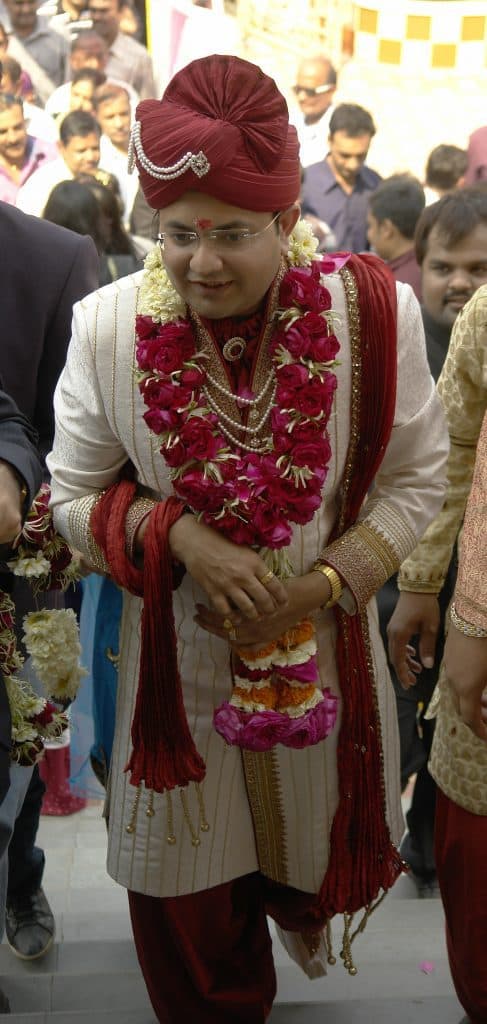
The groom’s wedding attire in a Himachali wedding reflects the traditional elegance of the region. He often wears a dhoti-kurta or a sherwani, which highlights his cultural roots. To complete the look, the groom dons the iconic Himachali topi, a traditional cap that is a symbol of local heritage and pride. This attire, with its simplicity and cultural significance, complements the grand celebrations of a Himachali wedding, blending tradition with elegance.
Rooted in age-old customs, these ceremonies extend beyond the union of two individuals to encompass the values of family, respect, and spiritual devotion. Each ritual not only honors ancestral heritage but also fosters a sense of togetherness among the community.
Through distinctive attire, traditional music, and the active involvement of loved ones, Himachali weddings beautifully illustrate the essence of celebration in a way that is both simple and profound. As these traditions continue to thrive, they serve as a reminder of the enduring bond between love and cultural legacy in Indian society.
Read more: Latest



